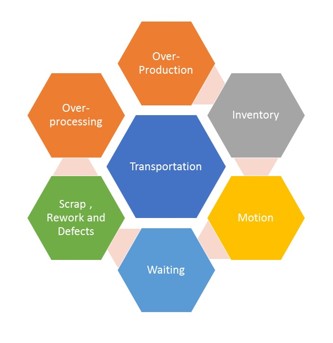In an era where customers have more choices, it is important to an organization to ensure maximum efficiency in its operations. Any losses in service or product delivery can and will affect final product cost and business profitability. The key to success therefore, is to minimize any wastage in the supply chain from supplier to customer, to facilitate this objective. In an era where customers have more choices, it is important to an organization to ensure maximum efficiency in its operations. Any losses in service or product delivery can and will affect final product cost and business profitability. The key to success therefore, is to minimize any wastage in the supply chain from supplier to customer, to facilitate this objective.
In an era where customers have more choices, it is important to an organization to ensure maximum efficiency in its operations. Any losses in service or product delivery can and will affect final product cost and business profitability. The key to success therefore, is to minimize any wastage in the supply chain from supplier to customer, to facilitate this objective.
“Waste” is defined as material or resources in excess of customer requirements, on the path to the delivery of a product or service. From a service perspective, wastage could involve inappropriate service delivery, which affected customer perspectives and required rework.
From a manufacturing perspective, this could involve extra raw material used in production. For example, in the manufacture of clothing, if excess cloth is cut for a production run, the result will be extra scraps of clothing that could have been utilized for the next production batch.
The Lean Methodology has successfully, defined seven waste forms that contribute to operational inefficiency. These wastes are highlighted below, with appropriate examples where necessary.
OVER-PRODUCTION
One of the tenets of Lean Manufacturing is a Just-In-Time system which facilitates the minimum inventory in an ideal theoretical operation. Over-production occurs in instances where product generation exceeds product demand. The alumina industry is an ideal example of over-production.
Excess capacity is generated, which is stored either on-site or near a dock. In the event of a bad production batch, the excess production can be blended with the out of specification product, to restore the average blend back to target. Over-production should be carefully utilized due to its impact on inventory. You want to keep enough stock on hand, to carry you over during the rough periods. A good way to identify the ideal inventory levels is to track your customer demand, and compare it to your operational uptime.
If the facility runs smoothly most of the time, the inventory levels can be kept to a minimum. If the operations have frequent disruptions, it will be in the best interest of the organization, to ensure that a suitable stock is kept on hand. Consider costing into your inventory, since the capital can always be utilized elsewhere.
INVENTORY
Inventory is a tally of the raw material progression through a process. The term is applicable to both services and products, as there is an item either physical or intangible that is being transformed via each stage. As production takes place, it is important to track the organization progress so that appropriate customer satisfaction can be attained. Appropriate inventory management is ideal to ensure that excessive capital is not being tied up. Storage also has additional costs and it is in the best interest of the management to minimize these associated costs.
MOTION
Motion waste is brought about due to inefficient operations. The car manufacturing industry has managed to minimize this waste to a science. Via assessing the best way to install individual car components such as car doors, the most efficient installation times, and production outputs have been achieved by the industry. With the advent of robotics, the precision can be improved even more, and higher consistent quality output sustained.
TRANSPORTATION
The supply chain is a critical component to sustaining operational efficiency. One way to minimize this waste is to keep all the unit operations in close proximity to each other, as well as in sequential order so that no steps are re-traced.
OVER-PROCESSING
Exceeding customer expectations beyond economic feasibility is a waste. As much as it is in our best interest to satisfy customer needs, the organization needs to protect itself. The best operational standard to uphold, is to use the minimum resources to satisfy the requirements of the customer. Appropriate process optimization strategies will minimize this waste.
SCRAP, REWORK AND DEFECTS
If a product does not meet customer specification, it is either scrapped, reworked or deemed as ineffective. This is not desired because each production pass has an associated cost to it. Built in process quality controls along the process, or blending where necessary, can help to alleviate this outcome.
Minimizing the aforementioned process wastes, will enable your organization to operate from a leaner perspective, and allow for more competitive and profitable operation.
